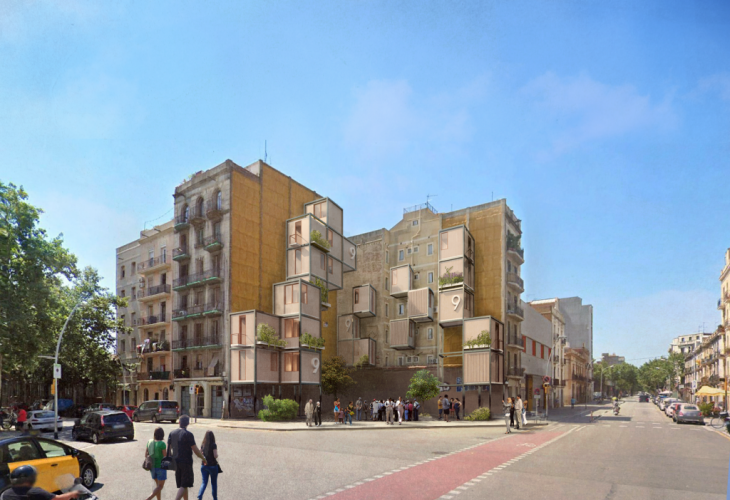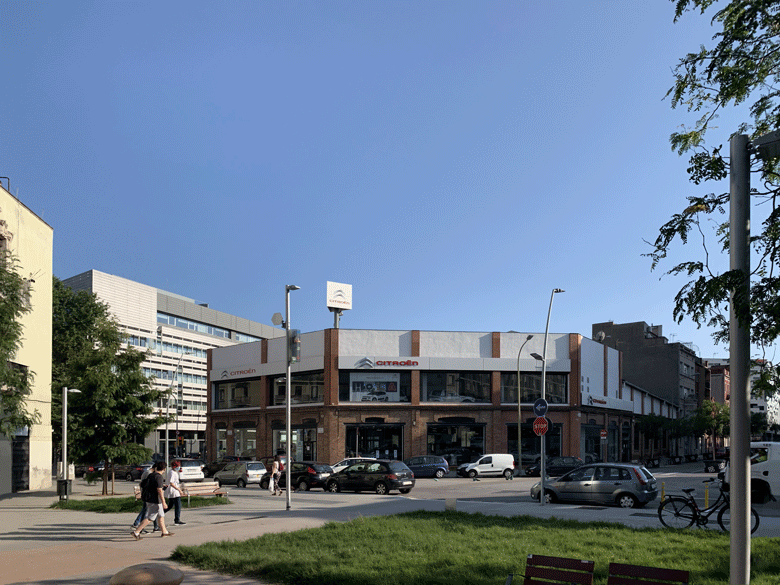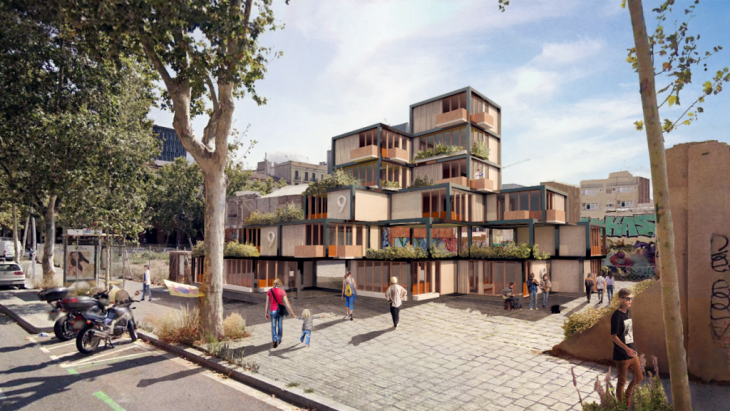Responsive Parasitic Housing. Affordable Housing BCN.
The drive of more population to our cities is causing a housing crisis. The UN states that 2.5 billion more people will live in cities by 2050. The question is where they will live, and what structures we will build within our cities to house these people. We could build densely and vertically, as we’ve seen in cities such as Hong Kong, China. We could build outwardly, evidently by the urban sprawl in a city like Los Angeles, CA. But in both of these solutions, we are skeptical of preserving the authenticity of these cities as we know and love them. And so, we challenge the UN statement and state the 2.5 billion more people will attempt to live in cities by 2050, highlighting the phrase “attempt to live” because of the issues we foresee.
Layered on top of that, there is also an affordable housing crisis ongoing within our cities. In a 2018 report, it was stated that 38% of households pay more than 40% of their income towards rent in the EU. The recommended amount is 30% of income or less. Furthermore, there is a $57 billion dollar funding gap between the affordable housing demands in terms of tenants and the funding that EU city councils set forth for affordable housing.
Given this issue, we start to think about what it means to offer housing to a citizen in our cities. Instead of just a roof over their heads, what affordable housing truly represents is the opportunity you give to a citizen to integrate within and contribute to their community.
Therefore, we ask a question: How can we build flexible, sustainable, and programmatic affordable housing models to provide a symbiotic relationship between our citizens and their neighborhoods?
In looking at Barcelona, there is clearly a shortage of public housing stock, as only around 1% of housing is dedicated towards social housing. This has led the city Barcelona to set forth the “Right to Housing” plan, a 10 year strategy published in 2015 to increase the use and affordability of their housing stock. Of their 4 main strategies, the first two seem to be ones we could tackle in the Internet of Buildings studio: increase the number of affordable housing flats and re-purpose the existing housing stock into affordable flats.
Furthermore, we zero in on the Sant Marti district and create an affordable housing index to see how it matches up against the rest of the districts in Barcelona. Using baseline metrics such as income and cost of rent as well as layering in economic, demographic, and infrastructural data points about the districts, the district is actually one of the lower scoring districts in Barcelona according to its affordability. This makes us believe that Sant Marti and our site of 28 blocks is ripe for a new affordable housing model.
In posing our question in looking for a flexible, sustainable, and programmatic solution, parasitic architecture seemed to be a perfect fit. While parasitic architecture isn’t new, we have recently seen projects such as the 3box project in Paris as well as the APROP project in Barcelona exemplify the fact that cities are looking to use parasitic housing models in order to adapt to their respective urban forms.
The flexible nature of parasitic architecture allows it to be adaptable to any urban environment, temporal in terms of its quick construction and deconstruction process, as well as grow in any pattern that the city may see fit. It is also often sustainable, in that the materials used are often from a circular design process that come from the natural elements of the city itself. These aspects lead us to believe that there is data that can be tracked by these parasites, onto their hosts, and for a specific impactful output. And thus, we are able to develop a programmatic model, which can adapt to the ever changing demands of the city.
We were able to design a computational design model that looks at a bunch of different parameters of our site and plugs in parasites, visualizing them and their impact on the urban fabric. Parameters we used were building height, building age, land use type, roof area, as well as accessibility to a defined number of services. This filtered down our site to a number of available buildings of which the user can select a certain number of buildings they want to use of that set, and the number of units they want to build on top of these hosts. The user can then see the impact of such a plan on population metrics (new population, density, average rent) as well as economic metrics (commercial density, urban entropy). This tool is designed to be used by the city council, in serving up a bunch of parameters to them that they see best fit their needs and communities.
While we were able to simulate such projects and their impact on the urban fabric with these metrics, we wanted to take it a step further. We know that cities are living and breathing organisms, and thus we didn’t want to think of the impact as simply a cause and effect optimization relationship. Therefore we thought about a couple of different impactful scenarios that would integrate these affordable housing tenants within the site. One scenario is work placement programs, where tenants would take advantage of the 22@ innovation district in Sant Marti and be plugged into the vibrant innovative culture. Another scenario was that we would exchange units between parasites on an ongoing basis to create productive communities, perhaps by demography or other parameters. In painting these scenarios, the point we are getting across is that the demand for affordable housing will only go down as the quality of their integration within the urban fabric goes up. The more we can integrate people within the community (and faster), the more opportunities we can give to our citizens.
Responsive Parasitic Housing. Affordable Housing BCN is a project of IaaC, Institute for Advanced Architecture of Catalonia
developed at Master in City & Technology in (2019/2020) by:
Students: Byron Cadena, Aryo Dhaneswara, Andrew Saltzman
Faculty: Areti Markopoulou, Alex Mademochoritis and Iacopo Neri.


